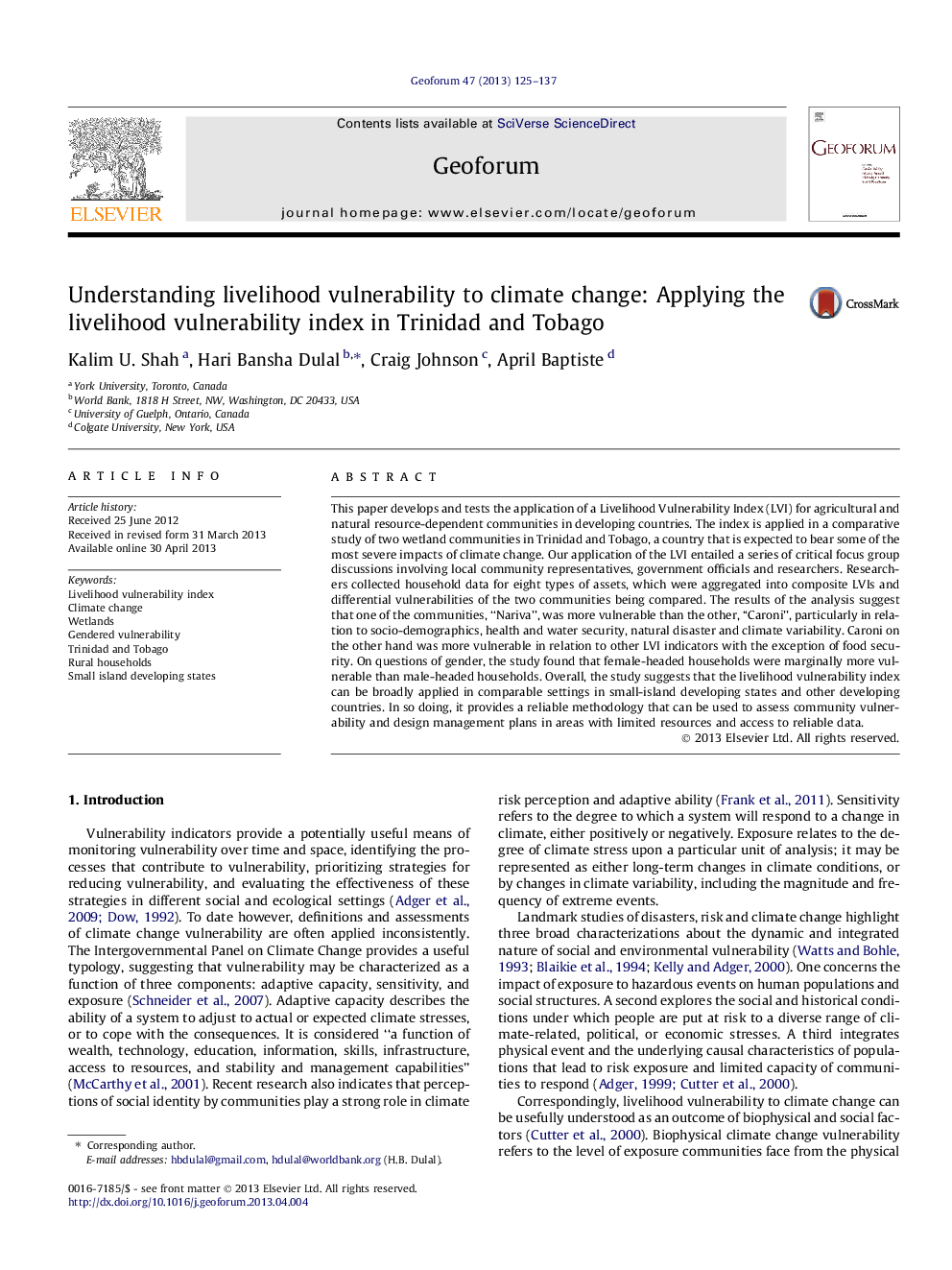| Article ID | Journal | Published Year | Pages | File Type |
|---|---|---|---|---|
| 5074284 | Geoforum | 2013 | 13 Pages |
â¢We develop and test the application of a Livelihood Vulnerability Index (LVI).â¢We identify and compare climate change-specific livelihood vulnerabilities.â¢LVI can be applied for understanding local vulnerability to climate and environmental change.
This paper develops and tests the application of a Livelihood Vulnerability Index (LVI) for agricultural and natural resource-dependent communities in developing countries. The index is applied in a comparative study of two wetland communities in Trinidad and Tobago, a country that is expected to bear some of the most severe impacts of climate change. Our application of the LVI entailed a series of critical focus group discussions involving local community representatives, government officials and researchers. Researchers collected household data for eight types of assets, which were aggregated into composite LVIs and differential vulnerabilities of the two communities being compared. The results of the analysis suggest that one of the communities, “Nariva”, was more vulnerable than the other, “Caroni”, particularly in relation to socio-demographics, health and water security, natural disaster and climate variability. Caroni on the other hand was more vulnerable in relation to other LVI indicators with the exception of food security. On questions of gender, the study found that female-headed households were marginally more vulnerable than male-headed households. Overall, the study suggests that the livelihood vulnerability index can be broadly applied in comparable settings in small-island developing states and other developing countries. In so doing, it provides a reliable methodology that can be used to assess community vulnerability and design management plans in areas with limited resources and access to reliable data.
